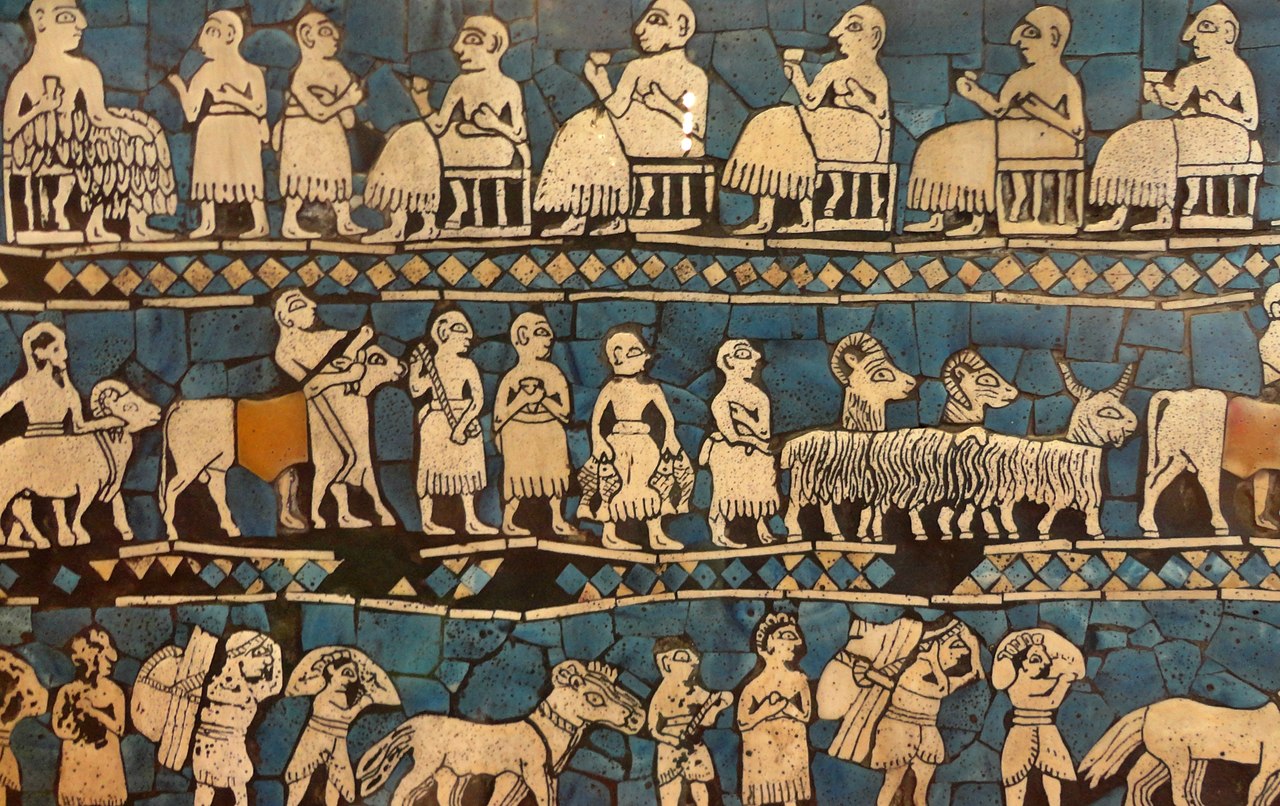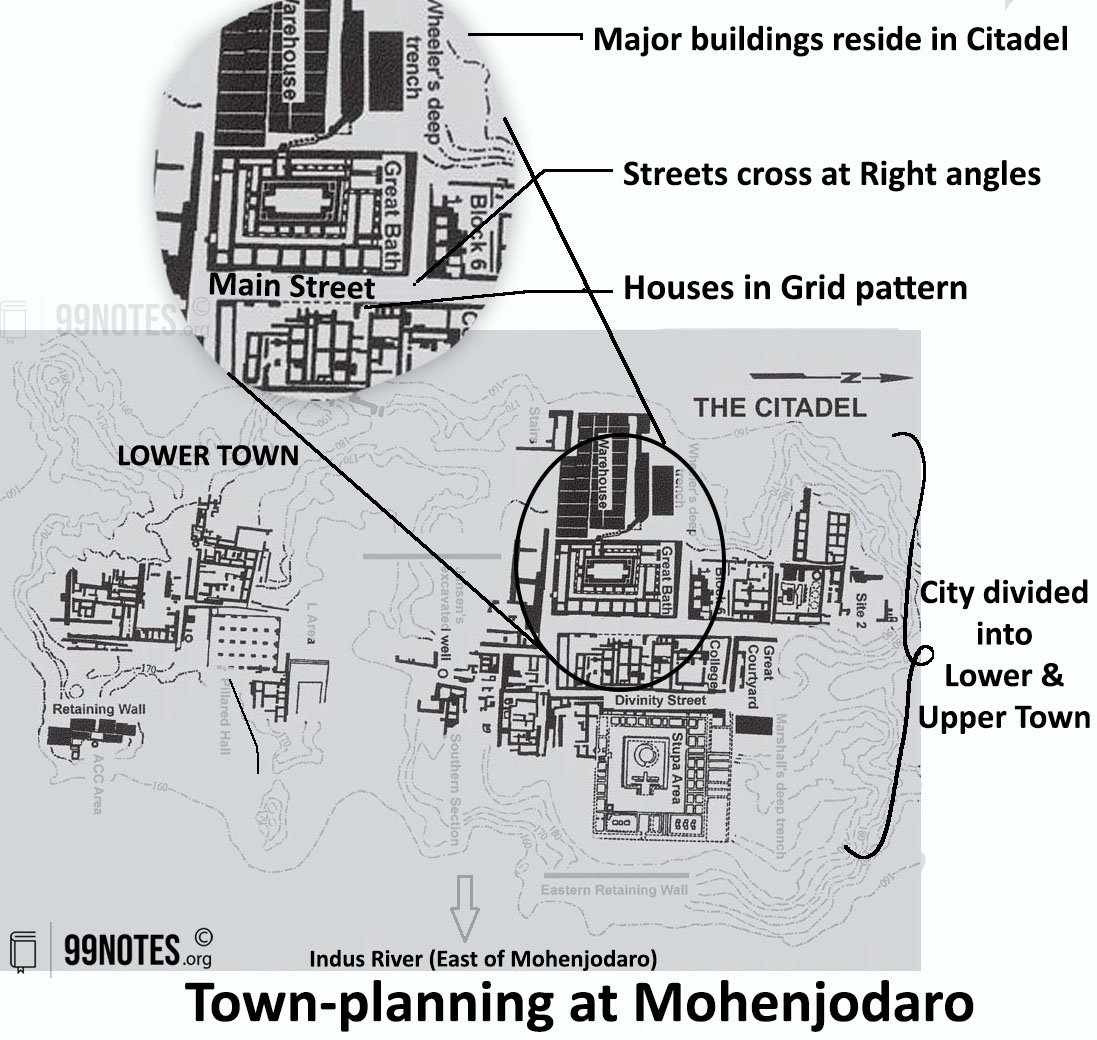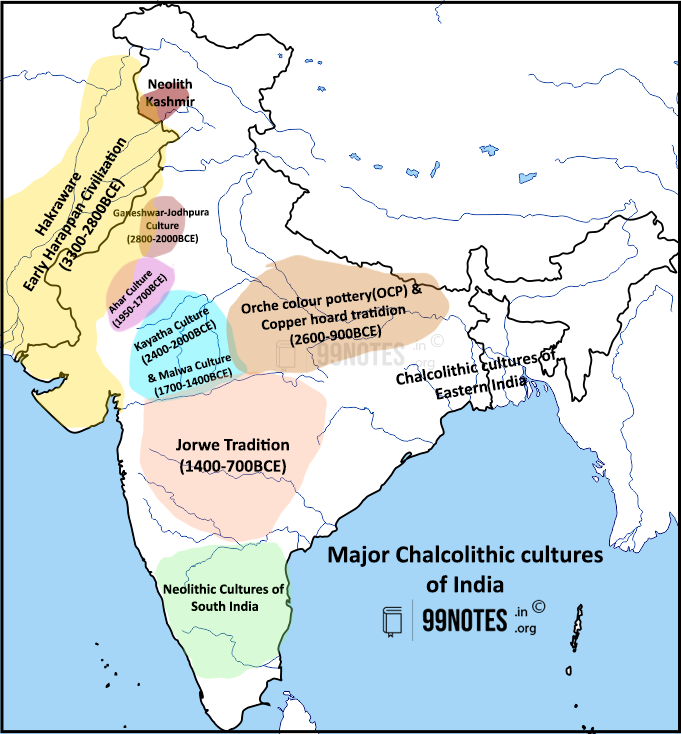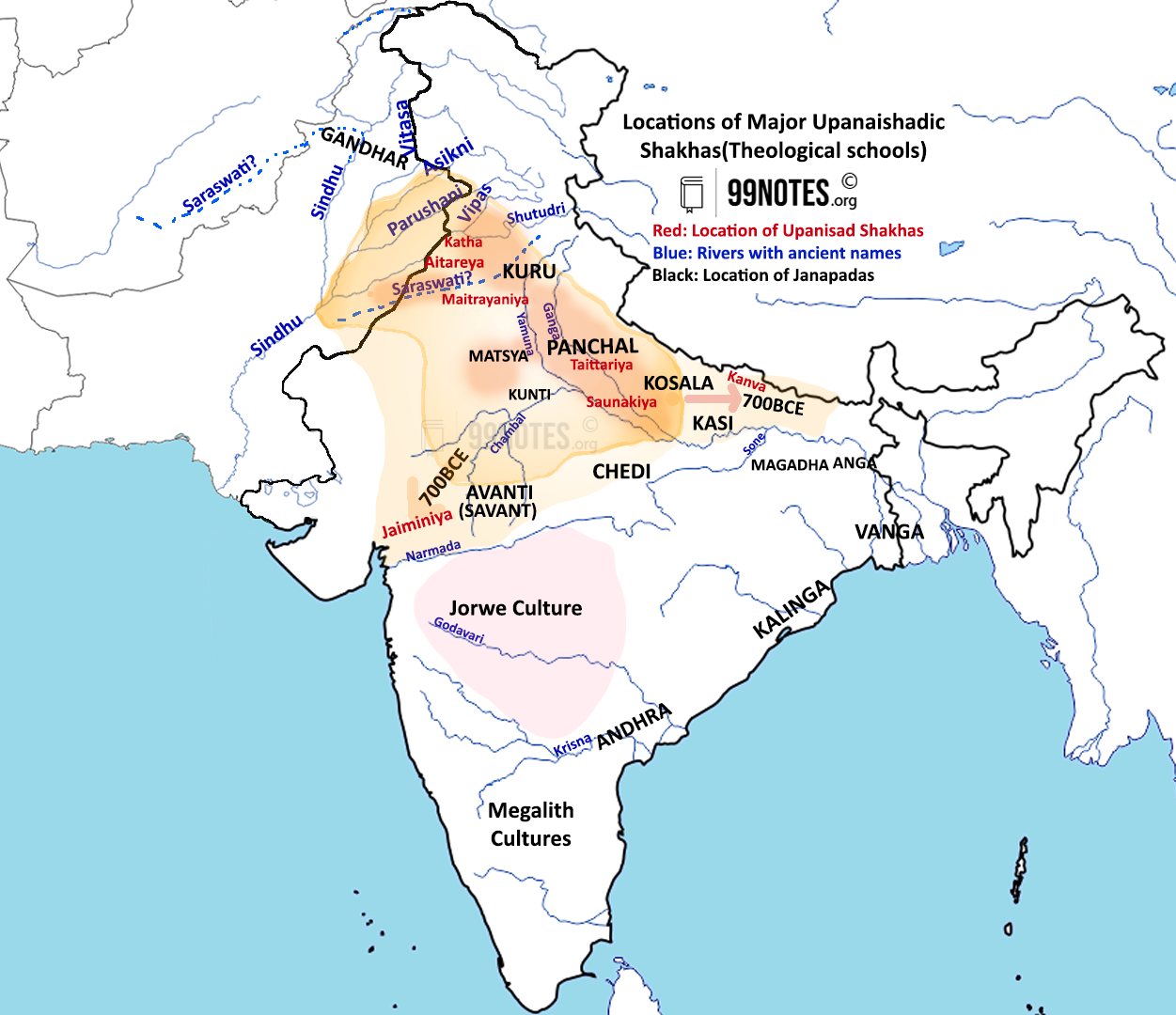Development of Early Civilization
India is often referred to as a civilization state because it has 5000 years old civilizational history. The earliest Indian civilization to be named is the Harappan Civilization (3300 BCE – 1300 BCE), which was contemporary to civilizations such as Mesopotamian and Egyptian. After its decline, we can see a continuous chain of cultures and civilizations in India, which we shall see in this chapter.
What is Civilization?
Civilization refers to materially advanced culture. It illuminates culture in its physical form through architecture, literature, arts, life patterns, etc. When material dimensions such as a pattern of living, economic activities, and resource availability take place, culture assumes the form of civilization.
This process of advancement was responsible for the transformation of many chalcolithic cultures into the Harappan Civilization. Every civilization will necessarily have a culture associated with it, but every culture may not have civilizational dimensions.

|
Editor’s Note |
| You might find some portions of this chapter repitative, if you have already read our Ancient History book. In that case please take this chapter as an opportunity to review what you have already read there. |
Difference between culture and civilization
In Anthropology (study of humanity), culture is referred to as a practice wherein humans develop a capacity to express themselves symbolically through language, clothes, dances, arts, etc. When a culture experiences a certain degree of refinement and better resource availability due to a certain degree of urbanisation, we say that a civilization has developed.
| Culture | Civilization |
| Culture can be rural as well as urban in nature | Civilization is urban |
| An Anthropological Culture is mostly supported by primary economic activities. | Civilization is when secondary and tertiary activities are well developed. |
Characteristics of a Civilization
- People of Civilization used formal means of entertainment such as toys, games, etc.
- Civilization has a wider socio, cultural and economic interaction sphere where an element of government is present, whereas, in culture, it is much narrower.
- Civilization is the result of the evolution of culture, and when a civilization declines, its people may end up on the cultural stage.
Early civilization in India:
India had experienced the development of cultures quite early. We experienced Neolithic cultures and agriculture more than 10000 years ago, and the first chalcolithic cultures developed 6500 years ago. However, the development of urban culture can be traced back only to 3300 BCE, with the development of Harappan civilization, which existed for a long period of around 1300 years and then declined.
By 1500 BCE, we find traces of Vedic culture, which was rural in nature. In fact, the 2nd age of urbanisation started only after 600 BCE with the start of Mahajanapadas.
Harappan Civilization
 Harappan Civilization had its developed form of architecture and script, written using the Boustrophedon method and art, which qualifies it to become the first civilization on the Indian subcontinent.
Harappan Civilization had its developed form of architecture and script, written using the Boustrophedon method and art, which qualifies it to become the first civilization on the Indian subcontinent.
Our understanding of the Harappan civilization is limited because its script remains undeciphered.
HARAPPAN PHASE OF URBANISATION
Harappans have a well-developed urban planning system, which is the best among contemporary civilizations. Features of Harappan urban planning were –
- Division of town into two (Harappa and Mohenjodaro) or sometimes three (Dholavira) areas.
- The citadel was built higher than the lower town and could have housed the important people in the city – wealthy traders, rulers and priests.
- In comparison, the lower townhoused ordinary people. This signifies the divide between the rich and poor of the Harappan age.
- The streets were straight and dissected each other at right angles. They were around 15 to 35 feet wide and were well-lined.
- The streets and roads meet in such a manner that divides the city into rectangular areas.
- Lamp posts have been discovered at intervals, which suggests the existence of street lights.
- Public structures: For example, Mohenjodaro features the Great Bath, which consists of a large quadrangular In the centre, there is an extensive swimming pool (approximately 40 ft long, 25 ft wide and 8ft deep) with galleries and rooms on all sides. It has a series of steps at either end and is fed by a well situated in one of the adjacent rooms. The water was discharged by a massive drain with a corbelled roof greater than 6 ft in depth.
- Drainage system: One of the remarkable features of the Indus Valley civilization is that the city was provided with a covered drainage system.
-
- Each house had drainage and a soak pit connected to the public drainage.
- Brick-laid channels flowed through every street. They had manholes at intervals for cleaning and clearing purposes.
- Large brick culverts were made on the city’s outskirts to carry excess water.
- No other contemporary civilization gave so much attention to cleanliness.
- The largest building in Mohenjodaro is a granary approximately 46 meters long and 16 meters wide.

- In Harappa, a series of brick platforms that form the base for 2 rows of 6 granaries are found.
- In the Southern part of Kalibangan, brick-made platforms have been found, suggesting the presence of granaries. Granaries stored the grains, probably collected as revenue or storehouses for emergencies.
- However, we have not found actual grains in these structures.
Differences between Harappan and Mesopotamian Urban planning systems –
While Mesopotamian and Harappan cities both witnessed urbanisation, standardised weights and measures, trades, and similar seals. However, there was a marked difference in many aspects of urban planning.
- Use of Bricks: Harappans used burnt bricks, while Mesopotamians primarily used unbaked bricks in construction.
- Geographical extent: Harappan Civilization was 12 times larger than the combined area of Mesopotamia and Egypt.
- Absence of religious architecture: Religious architecture, such as temples, was present in Mesopotamia, while Harappa is marked by a significant absence of such architecture.
- Political Organisation: There is no clear idea about the political organisation of the Harapan people. The stealite beard priest statue indicates that a class of merchants ruled them. On the other hand, Mesopotamians may be witnessed the rise of kingdoms.
- Town Planning: Harappan towns were planned, while Mesopotamian towns were developed
- Focus on Sanitation: While Mesopotamian cities paid little attention to the sanitation infrastructure, the Harappan cities had drainage systems and bathrooms in each house (at least in the citadel).
- Equality: The difference between the largest and the smallest houses in the Harappan cities is only twice or so. It seems that the power difference between people was not huge. This is unlike Mesopotamia, where we see Palaces and temples.
From the above shreds of evidence, we can say that the Harappan Civilization was not only the first urban centre but also a progressive society.
VEDIC CULTURE
The advent of Vedic culture is traced to the decline of the Harappan Civilization. Therefore, the period of Vedic culture is considered from 1500 BCE to 500 BCE.

The architecture of the Vedic era wasn’t been able to withstand time and climatic factors as it was built of materials such as mud, timber and bamboo, unlike Harappans, who used burnt brick and stones in their buildings. Thus, very few remains of Vedic age settlements have been excavated and found.
Characteristics of Vedic Age Settlements –
- Pastoralism and Agriculture: As Vedic people practised pastoralism and agriculture, their settlements were Primarily rural settlements with a low level of urbanisation.
- Houses and Huts: These settlements were made primarily of timber, mud, and bamboo. The Aryan hut was circular as well as rectangular in plan with a thatched roof.

- Fences: They used to surround settlements with special fences or fortifications to protect themselves and their property. Timber and bamboo gateway was installed along the village boundary wall, the form of which was later transformed into the famous stone toranas of the Buddhists.
- Nature of society: The vedic Society was largely rural. As there is no proper evidence of a trade system (secondary activities) and urban planning, we can’t say that proper urbanisation occurred in the vedic age. However, towards the end of the period, we see traces of the beginning of urbanisation, as the “Nagar” is mentioned in the post-Vedic texts.
Second Urbanisation:
The Second Urbanisation is the beginning of towns towards the end of the later Vedic period. The phenomenon occurred after 500 BCE, with new urban centres popping up throughout the Ganges plain, precisely the Central Ganges plain.
Characteristics of Second Urbanisation:
- The primary characteristic of this time is the extensive use of iron. This aided agricultural development.
- The iron plough and axe aided in clearing enormous expanses of forest land to provide farming land to increase agriculture production.
- An increase in internal and external trade laid the foundation of Second Urbanisation.
- The NBPW phase marked the beginning of the second urbanisation in India. However, the structures excavated till now are far less impressive than the Harappan cities. However, they indicate a significant increase in population when compared with Painted Grey Ware (PGW) settlements.
- A new currency system (punch-marked coins) came into the picture.
- Due to the increased population and Different types of trading activities, many towns also came into the picture where political and administrative centres were also put up, like Rajgriha, Kaushambi, and Champa.








